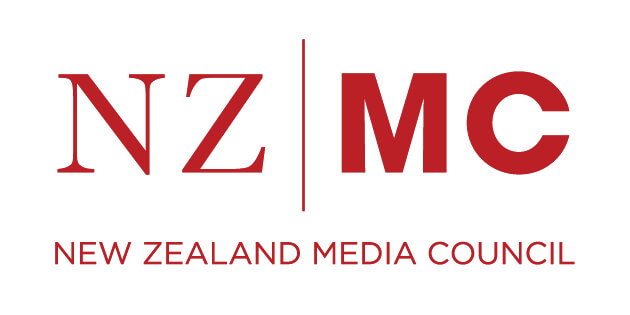UMAR KUDDUS AGAINST THE NZ HERALD
Case Number: 3567
Council Meeting: 21 October 2024
Decision: Upheld
Publication: New Zealand Herald
Principle:
Accuracy, Fairness and Balance
Comment and Fact
Headlines and Captions
Discrimination and Diversity
Ruling Categories:
Misrepresentation
Racism
Overview
- On 10 September 2024 the NZ Herald published an article headlined Avondale College student dresses up as Islamic terrorist, does fake bomb attack stunt on culture day. Umar Abdul Kuddus complained the article breached Principle (1) Accuracy, Fairness and Balance, Principle (4) Comment and Fact, Principle (6) Headlines and Captions and Principle (7) Discrimination and Diversity.
- The complaint is upheld under Principle (1) because it was inaccurate to describe the clothing worn by the student as that of an Islamic terrorist. The complaint is not upheld under the other Principles cited.
The Article
- The article covered an incident at Avondale College in which a student acted as an Islamic terrorist as a stunt on the school’s culture day. The article said the student ran into a classroom dressed as an Islamic terrorist wearing an Islamic white headscarf and thawb, a long sleeved ankle-length traditional robe. It said the student shouted “Allahu Akbar” and threw a backpack into the group of students.
- The article covered the school’s response in disciplining the student and gave further background by referring to a study showing high school students were most likely to be targeted in relation to Islamophobia.
The Complaint
- Mr Kuddus complained that describing the clothing worn by the student as the clothing of an Islamic terrorist was offensive because it is the traditional religious attire of Muslims. He explained he was Muslim and an Iman and wears the attire described in the story 90% of the time. He said the comments were irresponsible and fuelled the hatred of Islam in New Zealand.
The Response
- The NZ Herald defended the story to Mr Kuddus, saying it was a fact that the “student’s costume and conduct … was an attempt to mimic a ‘Muslim terrorist’.” The NZ Herald also said the article was disapproving of the actions. It said the article had information both on the school’s discipline of the student and a study on the prevalence of discrimination against Muslims in New Zealand. The NZ Herald did not agree that the article fuelled the hatred of Islam in New Zealand.
- In response to the Media Council, the NZ Herald focused on Principle (7) saying the article met the requirements of Principles (1) and (6) and Principle (4) did not apply. It said it did not defend or seek to explain the student’s actions and the article “adopted a disapproving tone from the outset.
- The NZ Herald disagreed with Mr Kuddus’ view that there was an implication that anyone who wore such an outfit is automatically a terrorist. It said the reason the student was described as a terrorist was “because he ran into the library, threw a bag designed to look like it contained a bomb, screamed ‘Allahu Akbar’ and fled.”
- The NZ Herald said the article provided additional context by covering the findings of a study into Muslims’ experience of discrimination in New Zealand that highlighted the prevalence of Islamophobia in high schools. It said the article sought to challenge negative stereotypes, not to perpetuate them.
The Discussion
- There appears to be no disagreement between the parties that the student’s actions intentionally mimicked an Islamic terrorist. The issue is whether it was appropriate to describe the student’s clothing as that of an Islamic terrorist, and if not, whether that was a breach of the Media Council’s Principles.
- .The Media Council notes the article’s opening sentence describes the student’s clothing (later described as the white headscarf and thwab) as being that of Islamic terrorist. The article continues, saying the student “also carried out a fake bomb attack”. In the Media Council’s view the NZ Herald has erred in describing aspects of Muslim dress as that of a terrorist. While taken together with the student’s actions, the Council agrees the student was mimicking an Islamic terrorist, but his clothing alone did not make him look like one.
- The Council accepts that the tone of the article was disapproving of the student’s conduct and the article included the school’s disciplinary actions, showing there were negative consequences for the student. It was useful also that the article provided greater context with information on a study showing the prevalence of Islamophobia in high schools.
Decision
- The Media Council finds the article breached Principle (1). This is because it was not accurate in the opening sentence or headline to represent wearing Islamic clothing as “dressing like a terrorist”. Principle (1) requires that “Publications should be bound at all times by accuracy, fairness and balance.”
- The article was not commentary or an opinion piece so Principle (4) Comment and Fact does not apply. Principle (6) Headlines and Captions was not breached as the headline correctly reflected the article, but as noted above, the article and headline breached Principle (1).
- The Media Council does not find a breach of Principle (7). Principle (7) prohibits publications from placing gratuitous emphasis on issues of religion or race. However, publications are entitled to report on these matters. The Media Council is satisfied the NZ Herald did not place gratuitous emphasis on the Islamic religion.
Council members considering the complaint were the Hon Raynor Asher (Chair), Hank Schouten, Guy MacGibbon, Ben France-Hudson, Jo Cribb, Judi Jones, Marie Shroff, Alison Thom and Richard Pamatatau.
Council members Scott Inglis and Katrina Bennett declared conflicts of interest and did not vote.
